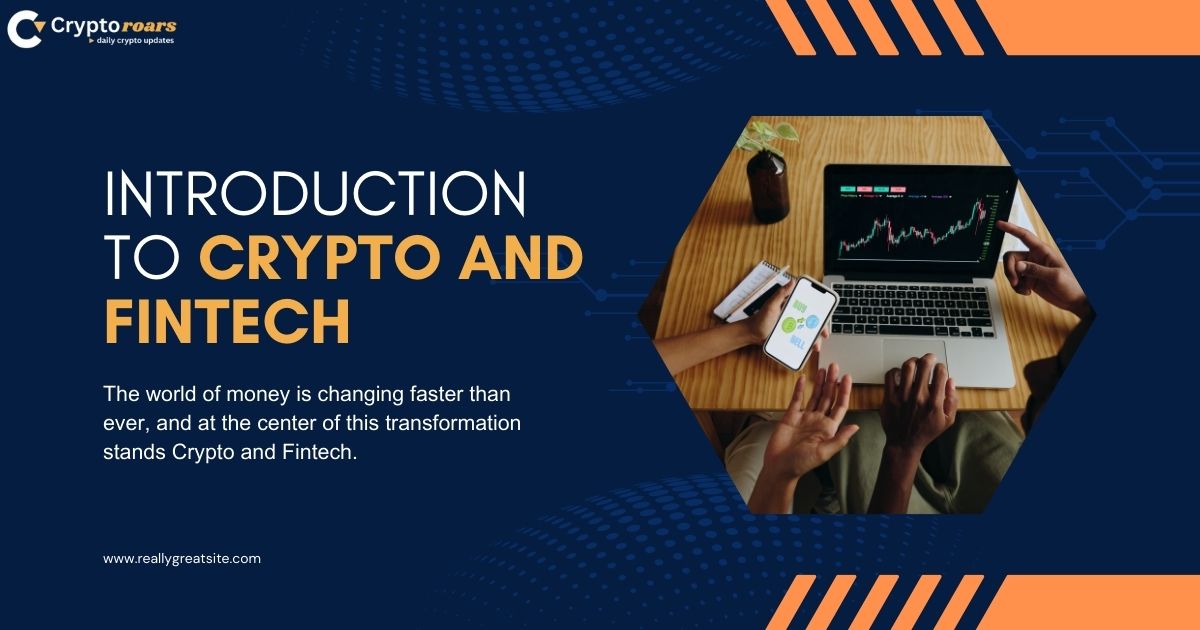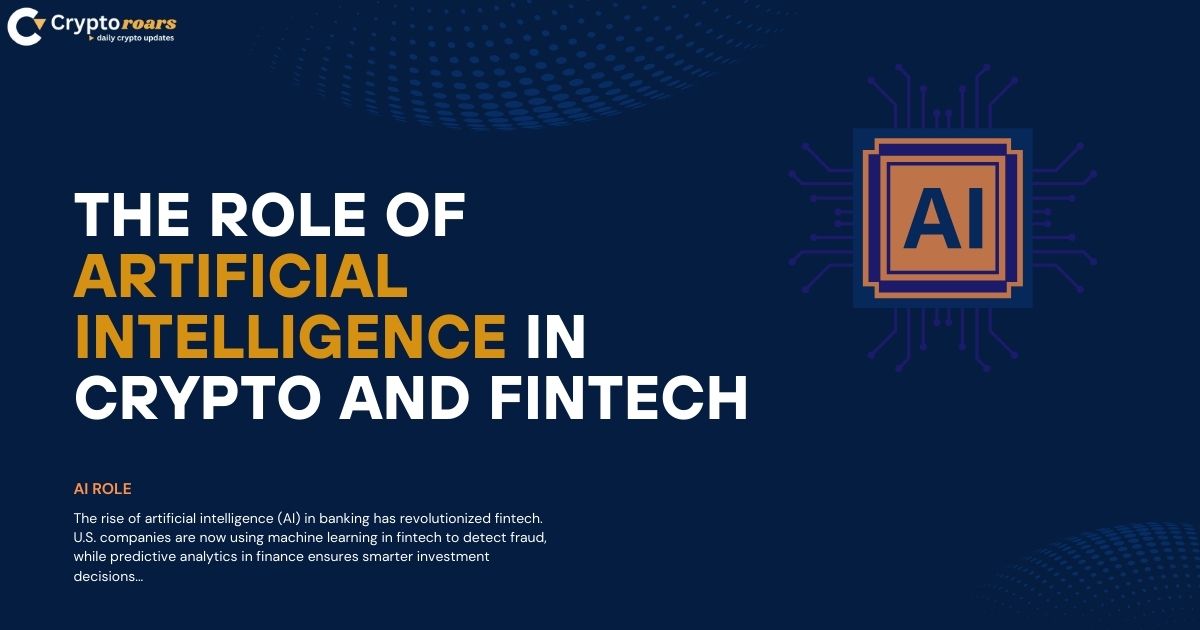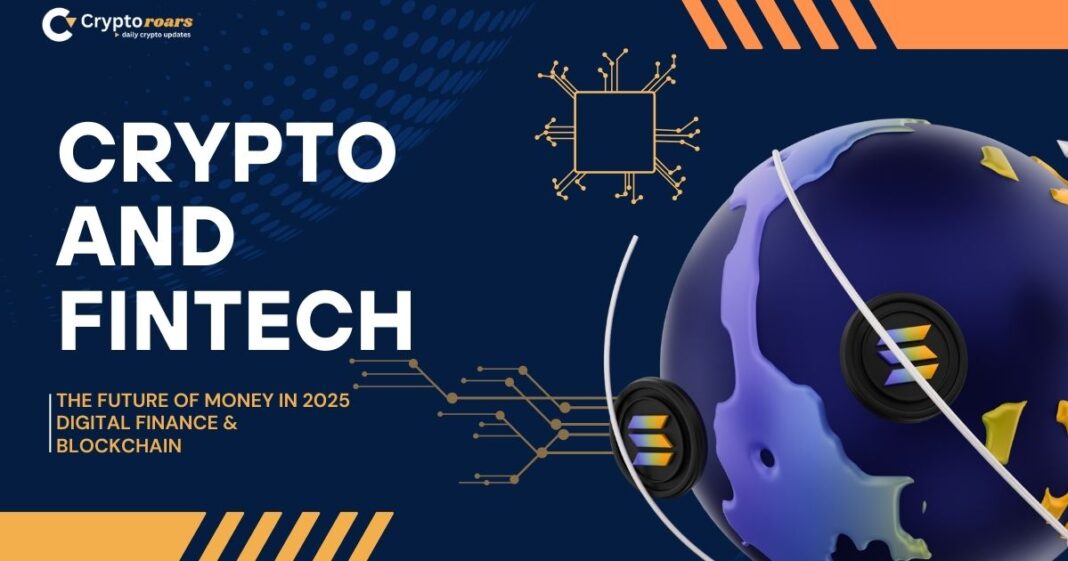Introduction to Crypto and Fintech

The world of money is changing faster than ever, and at the center of this transformation stands Crypto and Fintech. In the United States, both individuals and businesses are exploring how digital currencies and financial technology services are reshaping everything from savings to global trade. Unlike the old traditional banking sector, which often relies on slow processes and high fees, this new digital ecosystem offers speed, transparency, and accessibility. With innovations such as blockchain technology, real-time data, and digital wallets, the future of finance looks more open and customer-driven than ever before.
At the same time, Crypto and Fintech are not only about technology but also about inclusion. Millions from the unbanked population can now access money through apps, mobile-first platforms, and crypto wallets. This shift promises to make financial services more democratic, bridging gaps that old systems never fully closed. The journey has only begun, but its impact is already historic.
The Evolution of Money and Banking
Money has always evolved alongside human society, from bartering goods to gold coins, from paper currency to debit cards, and now to digital tokens. In the U.S., this journey reflects how the traditional banking sector once controlled every aspect of finance, dictating how people saved, borrowed, and transferred wealth. Over time, however, digital banking entered the scene and allowed customers to access services online without needing physical bank visits.
Today, the transition from paper money to digital currency adoption has accelerated. The use of mobile-first platforms like PayPal and Square illustrates how consumer behavior is shifting away from cash and checks toward digital-first experiences. As more people become accustomed to real-time financial interactions, the demand for faster, cheaper, and more secure methods continues to grow. This is the exact gap that crypto and fintech together are filling, ensuring a financial system that is not only modern but also inclusive.
What Is Cryptocurrency and How Does It Work?
Cryptocurrency is a digital asset built on blockchain technology, which ensures secure, transparent, and blockchain-powered transactions. Bitcoin was the first to prove that money could exist outside state or bank control, while Ethereum added programmability through smart contracts. In simple terms, cryptocurrencies allow people to send money instantly across the world without intermediaries.
The mechanics are straightforward yet powerful. Each transaction is recorded in a distributed ledger, eliminating double-spending and reducing fraud risk compared to credit card fee savings-driven systems. The ability to execute real-time settlements across borders makes it appealing not just for individuals but also for U.S.-based fintech firms. Whether it is crypto-backed lending, yield-generating savings accounts, or tokenized investment products, the reach of digital assets is now beyond just trading.
Understanding Fintech: Beyond Traditional Finance
Fintech, short for financial technology services, is the innovation that allows people to access financial solutions more conveniently. In the U.S., apps like Robinhood and Coinbase are examples of fintech that directly integrate digital assets adoption, while Goldman Sachs has also entered the space with scalable mobile applications for investment.
Unlike the traditional banking sector, fintech goes beyond simple savings or loans. It provides services such as peer-to-peer lending, fraud prevention systems, and predictive analytics in finance that use artificial intelligence (AI) in banking and machine learning in fintech to detect fraud and improve decision-making. This shift makes fintech not just a complementary service but a replacement for old financial models.
How Cryptocurrencies Are Challenging the Banking Sector
The U.S. traditional banking sector faces direct competition from cryptocurrencies. For decades, banks charged high fees for cross-border payments, forced long delays, and required strict Know Your Customer (KYC) processes. Now, crypto provides instant, secure, and cheaper alternatives.
For example, a small business sending money abroad using blockchain-powered transactions pays a fraction of what it would cost with SWIFT. Moreover, fraud risk reduction and lower costs for remittances have made crypto a natural disruptor. Even giants like JPMorgan are testing blockchain for real-time settlements, showing how the future of banking is shifting rapidly.
Blockchain Technology and Its Role in Fintech
Blockchain technology is the backbone of both crypto and fintech. It creates a transparent system where data cannot be changed, making it ideal for auditing, compliance protocols, and financial oversight. In fintech, this means improved trust and fraud prevention for users and businesses.
JPMorgan and Goldman Sachs are already integrating blockchain to modernize their platforms. In the U.S., this ensures scalable mobile applications for banking, secure payment gateways, and better compliance and regulation adherence. By reducing manual paperwork and improving traceability, blockchain ensures a more secure future for financial technology services.
Adoption of Cryptocurrency by Fintech Companies
U.S. fintech companies are leading in crypto adoption. PayPal, Square, and Robinhood all offer users the option to buy and store Bitcoin and Ethereum in crypto wallets. This mainstream integration is a critical step toward digital currency adoption across America.
The benefits for fintech firms are clear. By offering crypto-backed lending and tokenized investment products, they attract new customers and provide alternatives to the traditional banking sector. This helps reduce credit card fee savings issues and encourages everyday Americans to interact with cryptocurrencies safely.
DeFi (Decentralized Finance) and Its Opportunities
Decentralized finance (DeFi) is the fastest-growing branch of crypto. It allows people to lend, borrow, or save without banks. U.S. users now access yield-generating savings accounts and peer-to-peer lending through decentralized apps. This gives them more control over their money while reducing dependence on institutions.
However, DeFi also carries risks. Without clear compliance protocols, investors face challenges with fraud, hacks, and financial oversight. Yet, its potential in the United States remains high because it fills gaps left by banks, particularly for underserved communities.
Central Bank Digital Currencies (CBDCs) and the Future of Banking
The U.S. is actively studying central bank digital currencies (CBDCs), with the U.S. Federal Reserve exploring a potential digital dollar. Around the world, projects like the digital yuan, e-krona, and eNaira already exist, demonstrating the future of state-backed digital assets.
Unlike decentralized crypto, CBDCs are fully controlled by central banks, ensuring government-backed compliance and regulation. The U.S. approach will likely balance innovation with stability, especially given the risks of fraud, volatility, and international competition.
Financial Inclusion Through Crypto and Fintech
One of the strongest arguments for crypto and fintech is their ability to promote financial inclusion. In the United States, millions of people remain underserved by the traditional banking sector, including immigrants and low-income households. Through mobile-first platforms, they can access savings, loans, and remittances with only a smartphone.
This is particularly impactful for the unbanked population. By offering peer-to-peer lending, crypto wallets, and blockchain-powered transactions, fintech ensures access to financial services without relying on physical bank branches. For U.S. workers sending money abroad, the reduction in costs for remittances is life-changing.
Real-World Applications of Crypto-Fintech Integration
Across the United States, crypto and fintech integration is visible in multiple industries. Retailers accept Bitcoin payments, real estate firms use tokenized investment products, and fintech startups build payment gateways for digital banking.
| Application | Example | Impact |
| Payments | PayPal, Square | Lower fees, instant settlement |
| Investments | Coinbase, Robinhood | Access to crypto trading |
| Banking | JPMorgan, Goldman Sachs | Blockchain-powered transactions |
This real-world adoption proves the U.S. is moving toward a hybrid system where digital currency adoption becomes standard.
Leading Fintech Companies Driving Crypto Innovation
The biggest players in U.S. fintech are actively driving crypto innovation. PayPal has integrated crypto services into its mobile-first platforms, allowing millions of Americans to hold and spend digital assets. Square (now Block) focuses on building blockchain-powered transactions for merchants. Robinhood has made crypto trading available for beginners.
Even established banks like Goldman Sachs and JPMorgan are investing in fintech software development to remain competitive. Their role highlights that crypto is no longer just for startups but a priority for Wall Street giants as well.
Regulatory Landscape for Crypto and Fintech
The U.S. regulatory landscape is evolving quickly. Agencies like the Securities and Exchange Commission (SEC) and the U.S. Federal Reserve are defining how crypto fits into compliance and regulation frameworks.
Globally, frameworks like the Markets in Crypto-Assets (MiCA) regulation from the European Central Bank (ECB) provide a roadmap for the United States. Yet, the challenge remains in balancing innovation with protection. Without clear rules, risks such as fraud, scams, and unstable markets could harm consumers.
The Role of Artificial Intelligence in Crypto and Fintech

The rise of artificial intelligence (AI) in banking has revolutionized fintech. U.S. companies are now using machine learning in fintech to detect fraud, while predictive analytics in finance ensures smarter investment decisions.
When combined with blockchain, AI enables enhanced fraud prevention and better compliance protocols. Fintech startups use AI-driven, scalable mobile applications to provide personal financial advice, increasing trust in new platforms.
Privacy and Security Innovations: Zero-Knowledge Proofs & Tokenization
One of the most pressing concerns in U.S. fintech adoption is privacy. Solutions like zero-knowledge proofs (ZKPs) ensure transactions remain private while still verifiable. This balances user protection with financial oversight needs.
Another growing area is tokenization. By converting assets into secure digital tokens, fintech enables tokenized investment products and improves fraud risk reduction. This is key for maintaining security while promoting wider adoption.
Risks and Challenges in the Crypto-Fintech Ecosystem
Despite opportunities, crypto and fintech face challenges in the U.S. High market volatility of assets like Bitcoin and Ethereum creates uncertainty for consumers. The lack of full compliance and regulation also increases fraud risks.
Technical barriers such as scalability, reliance on outsourcing developers, and staff augmentation for fintech software development also present obstacles. The U.S. must balance innovation with stability, ensuring fraud prevention and consumer confidence.
The Future Outlook: How Crypto and Fintech Will Reshape Global Finance
The future of money in the U.S. will blend crypto and fintech. Digital banking, blockchain-powered transactions, and CBDCs will work side by side. Experts predict that within the next decade, digital currency adoption will dominate both retail and institutional markets.
As nearshore/offshore outsourcing allows American companies to access global talent, innovation in fintech software development will accelerate. By combining fraud prevention, AI, and blockchain, the U.S. will remain a leader in global finance. The transformation is not just about new technology but about a future where money becomes faster, safer, and truly global.
FAQs on Crypto and Fintech
Q1: What is the main difference between Crypto and Fintech?
Crypto focuses on digital assets adoption like Bitcoin and Ethereum, which use blockchain technology for secure transactions. Fintech, on the other hand, covers broader financial technology services such as digital banking, payment gateways, and peer-to-peer lending. Together, they form the backbone of the new digital currency adoption era.
Q2: How is Crypto and Fintech helping the unbanked population?
Through mobile-first platforms and crypto wallets, millions in the unbanked population can now send remittances, use yield-generating savings accounts, and enjoy real-time settlements without depending on the traditional banking sector. This ensures greater financial inclusion across Latin America, Africa, Eastern Europe and beyond.
Q3: Are Crypto and Fintech safe to use?
Yes, but safety depends on compliance and regulation. Governments and regulators like the Securities and Exchange Commission (SEC) and the European Central Bank (ECB) are setting compliance protocols. New tools such as zero-knowledge proofs (ZKPs), fraud prevention systems, and crypto-backed lending platforms reduce fraud risk and improve trust.
Q4: What role do banks and governments play in Crypto and Fintech?
Banks like JPMorgan and Goldman Sachs, along with central banks such as the U.S. Federal Reserve, are exploring central bank digital currencies (CBDCs) like the digital yuan, e-krona, and eNaira. These aim to balance innovation with financial oversight, creating a regulated space where blockchain-powered transactions and smart contracts coexist with compliance protocols.
Q5: What is the future of Crypto and Fintech?
The future involves artificial intelligence (AI) in banking, machine learning in fintech, and predictive analytics in finance, combined with blockchain-powered transactions. With rising demand for scalable mobile applications, fintech software development, and even staff augmentation using offshore fintech developers, the ecosystem will continue to grow. In time, Crypto and Fintech may fully reshape how money works globally, from credit card fee savings to cross-border payments with instant processing.
For more information, keep visiting cryptoroars.com


